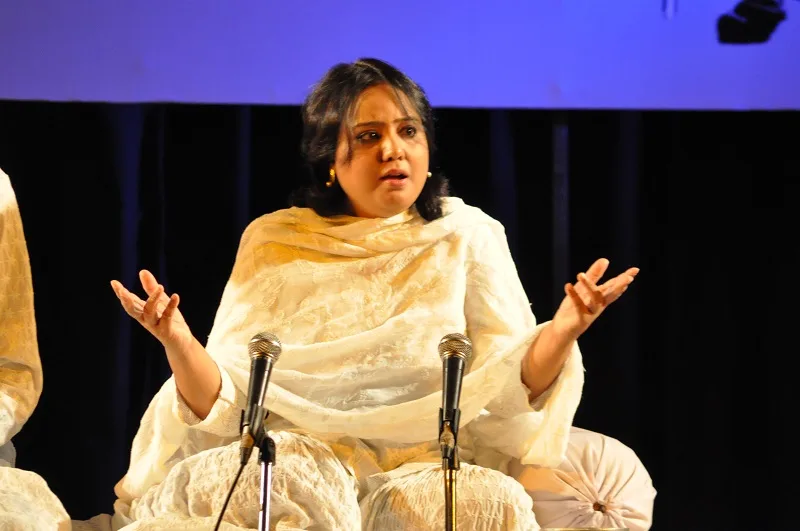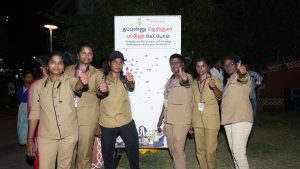Why I Want To Put Begamati Zubaan, The Vivid Urdu Of Zenanas, On Stage
Women’s Urdu was pungent, it drew from the world around, and it makes for great theatre

Four generations of my family have lived in Pahari Bhojla, off Turkman Gate, in the thick of the zone where people spoke an array of Urdu dialects mostly related to the occupations of the speaker (karkhandari zubaan). Until my grandmother was alive, it was spoken in my household as well.
In this era of social media, I find that Purana Dilli has been reduced to an even bigger cliche than it was. It is now, in the age of social media, all about Ramzan reels, brightly lit and all about ‘Wow, look at this nihari, or that paya, biryani!’
I grew up there in the midst of a vivid culture that is beyond these cliches in a household ruled by women, my grandmother, mother, aunts. Their voices and Urdu, marked by many feminine quirks, still ring in my ears though the language has been edged out of our lives now.
For me the go-to book on the old city is Dilli ki Chand Ajeeb Hastiyan, written by Ashraf Saboohi in the early 20th century. Here we find fascinating character sketches of the old Delhi’s working class, including the women. The barber, kebabchi, dhobi, chapati wala, nahari maker, pigeon keeper…folks whose lives were rarely touched on in the known literary epics. The book brought alive the very distinct, flavoured, spicy language they spoke, fashioned by their trade.
They were remnants of a world that had fallen apart when Delhi fell to the British in 1857. Mir and Ghalib have written about the desolation of the city but it is Saboohi’s characters who tell us how this world lived through the crisis and picked up the pieces. Saboohi himself is said to have drawn from the city’s stories passed on by his grandmothers. It is they who told him of its traditions, its rich linguistic traditions.
Saboohi spoke of the city’s “diwani auratein aur pagle aadmi (the city’s edgy characters)”. It is my cultural agenda as an actor to bring alive the language of these people, especially the diwani auratein. Begamati Zubaan is generally talked of as the language of the Zenana, especially the Begums of the feudal class. But when that class fell apart the language did not die, it lived in the homes of the common women. So, the Begums went but Begamati Zubaan remained.
https://www.youtube.com/watch?v=k8NRSfl3k_U
Khutoot-i-Niswan (letters written by women) is my attempt at putting this zubaan on stage because if we just write about it, do academic research around it, very few will know of its richness. My effort is to bring the language alive as it was spoken, full of humour, extravagance, idioms, and everyday wisdom.
I have been working for two years on the play, picking the letters I wanted to read out from the literature I gathered from Urdu writers. They are all written by women to mostly other women in their families — daughter to mother, granddaughter to grandmother, aunt to niece, sister to sister, and occasionally, a woman to her husband or brother. These letters are fictional – they were penned by its author – but that does not make them any less real.
There is a daughter complaining that her mother is spending too much time with her old sister who has just delivered, a mother writing matter of factly to her daughter about her impending death, an aunt condoles on this death, a child seeking her aunt’s gifts for her doll’s wedding, a new mother asking her aunt for lullabies…
I schooled at the English-medium Jai Bharat School in Chawri Bazar but my mother was scared I would lose my Urdu so she moved me to the Urdu medium Government school at Bulbuli Khana. “Otherwise, how would you write letters to me in Urdu when you go away?” she would ask. Letter writing was very important for women in my family, it was almost their domain. There were entire rituals around writing them, even opening an envelope.
The letters they received, read and wrote were full of life. They didn’t need to see therapists, they had conversations all the time. My mother, dadi, phuphi, khala all spoke with that lehja, today you can’t find it in old Delhi, everyone speaks English and even the Urdu sounds the same.
The language of old Delhi, derived from distinct trading communities, is now the subject of humour and ridicule because it is not “refined”. You hear these terrible aaariya, jaariya type of jokes. But I grew up with this zubaan around me and its amazing colours in a household full of talkative women. To date, I don’t know what many of my grandmother’s pet expostulations meant. She would get irked that I did not have the patience to learn embroider while all around me my mother and aunts could embroider an entire cupboard of bed linen, embellish their own bridal trousseaus and that of the others. So my uchhal dida grandmother would grumble: “Tera beti ka pitta nahin mara hua.”
Her Urdu was richly imaginative, expressive, exaggerated; there was pleasure in how she spoke it and how we heard her. ‘Tumne to apna hadada kho diya’ she would say, meaning you are so shameless.”
This zubaan could also be pretty pithy and explicit, when women were in an exclusive space. They were not literate so they were under no compulsion to speak the refined Urdu we consider standard. It was also influenced by the language of many people the women dealt with even when they were in purdah. The women who dabbled in various trades, the dhobin (washerwoman) for instance. And of course, the domestic workers. So it had a lot of earthiness.
I still remember that when my uncle walked into a room full of women, he would loudly clear his throat at the threshold. It was a hint we should stop any ribald stuff and straighten our dupattas and look decorous. It was a signal to “behave”.
The thing is that women have a natural gift to make language more effective and descriptive because they are not bound by the need for formalism.
I referred to Muhiuddin Hassan’s 1976 work, Dilli Ki Begamati Zubaan, for my work. American scholar Gail Minault has explored Begamati Zuban in her essay Women’s Language and Culture in Nineteenth-Century Delhi.
(As told to Malini Nair)
We believe everyone deserves equal access to accurate news. Support from our readers enables us to keep our journalism open and free for everyone, all over the world.



